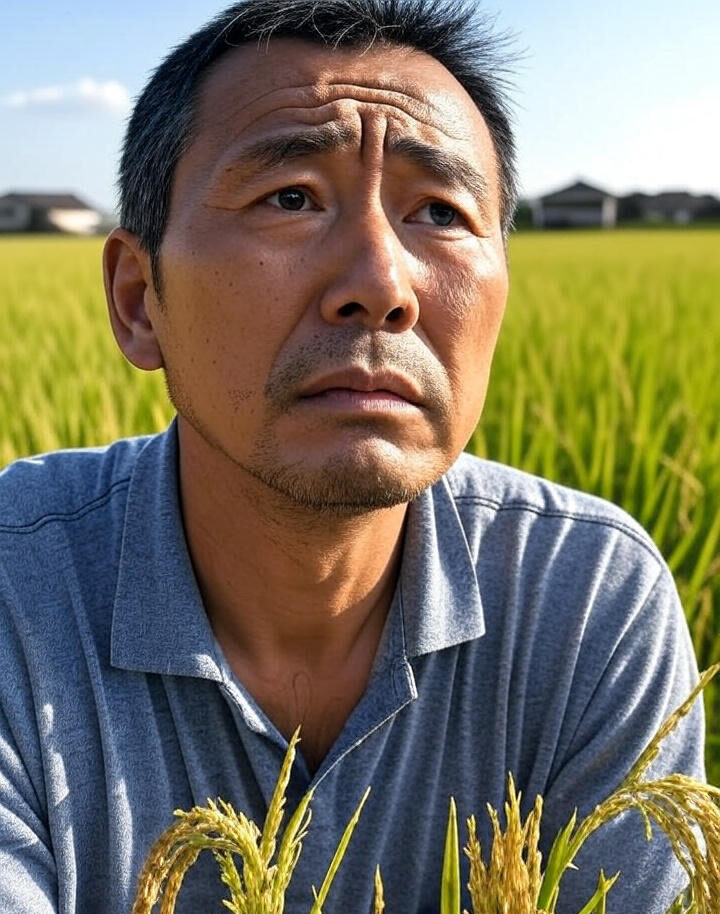Heatwave Hits Unprecedented Highs
Japan recorded its highest ever temperature of 41.8 °C (107.2 °F) in Isesaki, Gunma Prefecture a week after the previous record of 41.2 °C was set in Tamba, Hyōgo Prefecture (Reuters). The extreme heat came amid a July average that was 2.89 °C above the 1991 to 2020 norm, marking the third consecutive year of record breaking July temperatures (The Guardian).
Public Health Emergency and Rising Risks
Health authorities sounded the alarm: over 53,000 people have been hospitalized due to heatstroke so far this summer, with alerts issued in 44 of 47 prefectures (Reuters). Farm Minister Shinjiro Koizumi urged urgent preventive interventions to curb agricultural damage (Reuters).
Rice Crops in the Crossfire
Drought Stress and Rainfall Deficit
Key rice growing regions, especially in Tohoku and Hokuriku, received only 8 to 13% of normal July rainfall, decimating irrigation access and threatening the critical heading phase of rice development (Futubull).
Pest Surge Endangering Yields
High heat facilitated a proliferation of stink bugs and other pests, further damaging developing grains a major concern in a country where rice quality is tightly regulated for domestic markets (Reuters, thejakartapost.com).
Quality Decline and Supply Risks
Similar summer heatwaves in 2023 already reduced rice quality and triggered a national shortage due to mismanaged supply and demand, sending prices surging and requiring emergency policy responses in 2025 (Globedge).
Struggling Farmers and Aging Demographics
Japan’s farming population averages nearly 69 years old, and many elderly rice farmers continue physical labor despite soaring temperatures. In 2024, 877 farmers were hospitalized for heat-related illnesses in a single month even while adjusting work hours and hydration routines (AP News).
Government Response and Strategic Shifts
Authorities responded swiftly:
- A new initiative to boost rice production,
- Expanded pest control support and drought relief measures,
- Public advisories urging vulnerable individuals to remain indoors during peak heat hours (Reuters).
The government is accelerating efforts to promote heat-resistant rice varieties, though adoption remains slow amid traditional farming norms (AP News).

Broader Context of Climate Stress and Food Security
Japan’s extreme temperatures are part of a broader global trend linked to climate change. As weather patterns shift, crop resilience and food security become paramount concerns. Although rice yields globally may rise slightly under warmer CO₂ enriched conditions, Japan faces localized vulnerabilities from intense heat, drought, and pest pressures calling for urgent agricultural adaptation (The Guardian, Wikipedia).
Domestically, rigid rice policies designed to protect producers over consumers have historically amplified rice price volatility during crises. Past shortages in 2023 and 2024 exposed flaws in market responsiveness, with policymakers accused of institutional inertia even as supermarket shelves emptied and prices soared 60‑plus percent (UkrAgroConsult).
Economic and Social Implications
Rising rice prices disproportionately affect lower income households reliant on rice as a dietary staple. Vegetable prices have surged as well cabbage up 336 %, lettuce 238 %, threatening overall food affordability (freshplaza.com).
If 2025 replicates the production-value drop of 2023, Japan risks worsening shortages and potential rationing. Adoption of heat-tolerant strains and flexible market responses will be critical in averting another crisis.
Outlook and Strategic Imperatives
Japan’s unprecedented heat wave in early August 2025 has placed its rice harvest at serious risk. Accelerated climate adaptation measures are necessary to safeguard yields:
- Scale-up of heat resistant rice varieties,
- Enhanced water management and irrigation infrastructure,
- Strengthened pest control logistics,
- Reform of rice subsidy and distribution systems to balance supply flexibility with farmer protections.
As climate threats intensify, these reforms will determine food security stability and cost-of-living resilience for Japan’s population.
Summary
Japan’s blistering summer of 2025 including a record 41.8 °C high has elevated concerns over damaging drought, pest outbreaks, and declining rice crop yields. With aging farmers, fragmented policy response, and lingering vulnerabilities, Japan faces a precarious rice season. Swift government action and strategic adaptation are essential to prevent spiraling prices and a repeat of past shortages.

